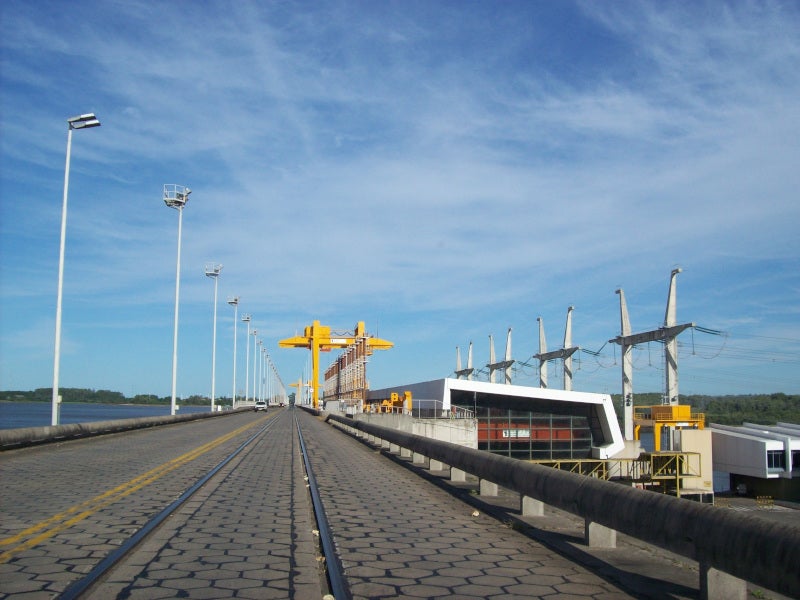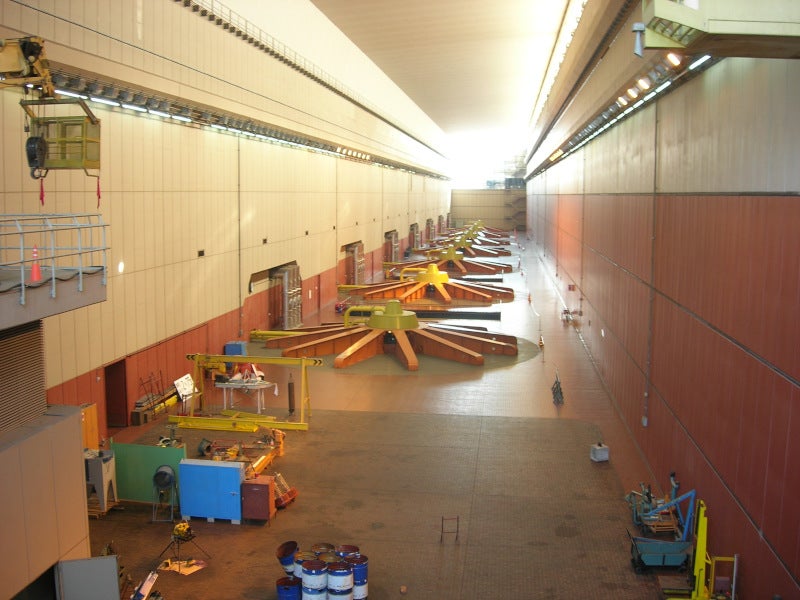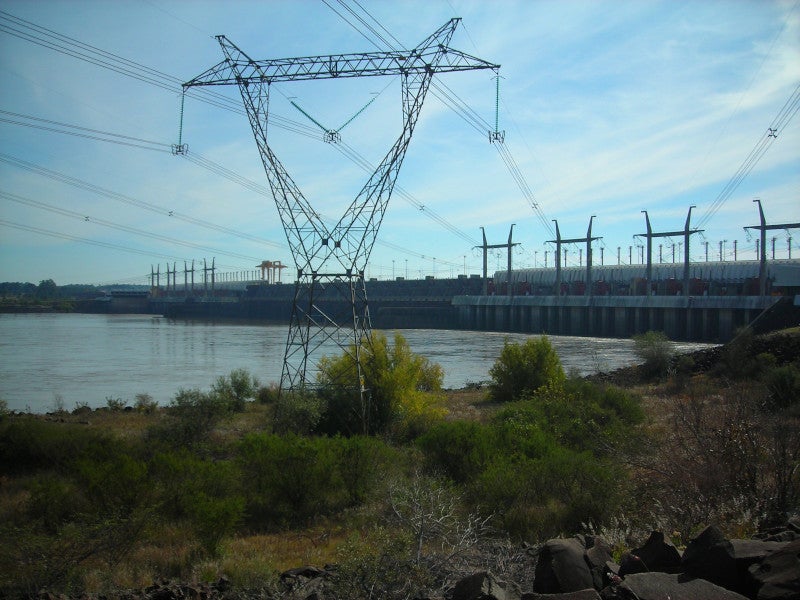The Salto Grande hydroelectric complex is a 1,890MW bi-national hydroelectric power plant located on the border between Concordia (Argentina) and Salto (Uruguay).
The 40-year-old power plant is owned and operated by a bi-national organisation called the Salto Grande Mixed Technical Commission (CTM).
The power plant is undergoing a £716.8m ($960m) renovation and modernisation programme in three-stages. The renovation project includes the upgrade of the electromechanical equipment and infrastructure to increase the useful life of the plant over a period of 30 years.
The first stage of the project, which began in 2019, is currently underway with completion targeted for 2023.
Once complete, the modernisation project will support a cost-efficient power supply for approximately 17 million customers in both the Latin American countries.
Location and site details
The Salto Grande power plant is located in the middle course of the Uruguay River, located between Concordia, Argentina, and Salto, Uruguay.
The dam’s built area is surrounded by rapids and rocky slopes and leverages the natural slope called Salto Grande for hydroelectricity generation.
Salto Grande Ferrovial International Bridge was built on top of the dam at 39m above the river level for connecting the cities of Salto and Concordia. It also connects the rail systems of Argentina, Uruguay, and Paraguay.
The existing Salto Grande hydroelectric complex and reservoir details
The Salto Grande hydropower complex comprises three dams, of which the central dam is made up of concrete and the two are made from earth materials.
The power station consists of two interconnected engine rooms on either side of the river housing seven 135MW Kaplan turbine generating units each with a total annual generation capacity of approximately 8,546GWh. The runner diameter of the turbine is 8.5m.
The Salto Grande reservoir has a length of 144km, while its surface area is 783km². The total evacuation capacity of the dam structure is 61,560 cubic meters per second, which is more than 58,000 cubic meters per second through landfill.
Salto Grande hydroelectric complex modernisation project
The upgrade works are being carried out in line with the technical cooperation agreement signed between CTM and the Inter-American Development Bank (IDB) in 2013. CTM, with financial support from the IDB, initiated a comprehensive study in 2014.
The study identified three options to carry out modernisation activities. Option A included preserving current turbines and intervening only on their worn or fatigued internal components; Option B determined to keep the hub of the impeller and change the blades for a design optimised for the frequent jumps and intervening in the internal components, and Option C outlined acquisition and installation of new turbines identical to the existing ones.
However, Option B was taken into consideration for estimating the costs associated with the restoration and modernisation of main generation equipment, generators, turbines, and auxiliary equipment in a phased manner.
The first stage of modernisation will include upgrades to the existing 14 turbines with Emerson’s Ovation™ automation technology to improve the plant’s availability, reliability, and safety.
The Ovation distributed control system includes measurement and machinery instrumentation for integrated vibration monitoring, embedded simulation, and generator excitation control.
Transmission system details
The power generated by the Salto Grande hydropower plant is evacuated via an interconnection ring between Argentina and Uruguay that comprises 350km-long, 500kV transmission lines, and four substations including a 1,300MVA transformer with 150kV and 132kV medium voltage networks.
Project financing
The three stages of the modernisation project are estimated to cost £59.7m ($80m), £104.5m ($140m), and £552.5m ($740m), respectively.
IDB provided two financing packages totaling £102m ($130m) for the Salto Grande hydroelectric power plant upgrade project in November 2018. Both the countries will hold equal liability for the IDB credit and the repayment term is for 25 years with a grace period of 5.5 years.
The first credit package for power plant overhaul included two loans of £31.4m ($40m) for each country. The second package included a loan of £39.2m ($50m) for the Salto Grande development and integration programme.
Contractors involved
Stantec, in collaboration with a local Argentinian company, performed a two-phased planning-level study for the upgrade project.
Emerson was awarded a five-year contract for the first stage of the modernisation project in September 2020.
Salto Grande hydroelectric complex background
Although the idea of hydropower generation at Salto Grande was first proposed by Mr. Gregorio Soler as early as 1890, the plant’s construction began in April 1974 and the full-fledged operations started in 1983.
The Salto Grande Mixed Technical Commission was formed with equal representation from both the countries to take charge of activities related to the use, damming, and diversion of river waters in 1946.





